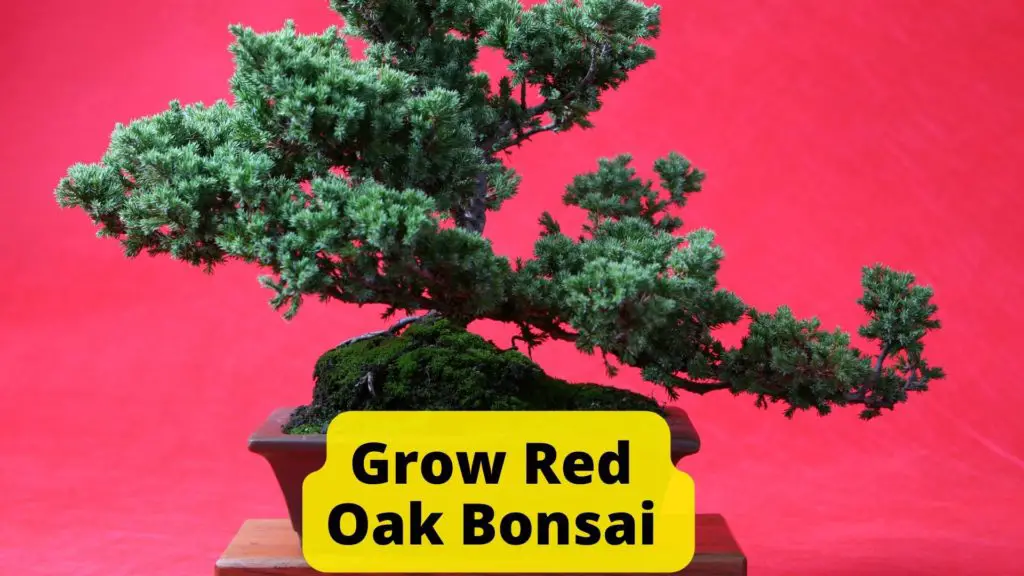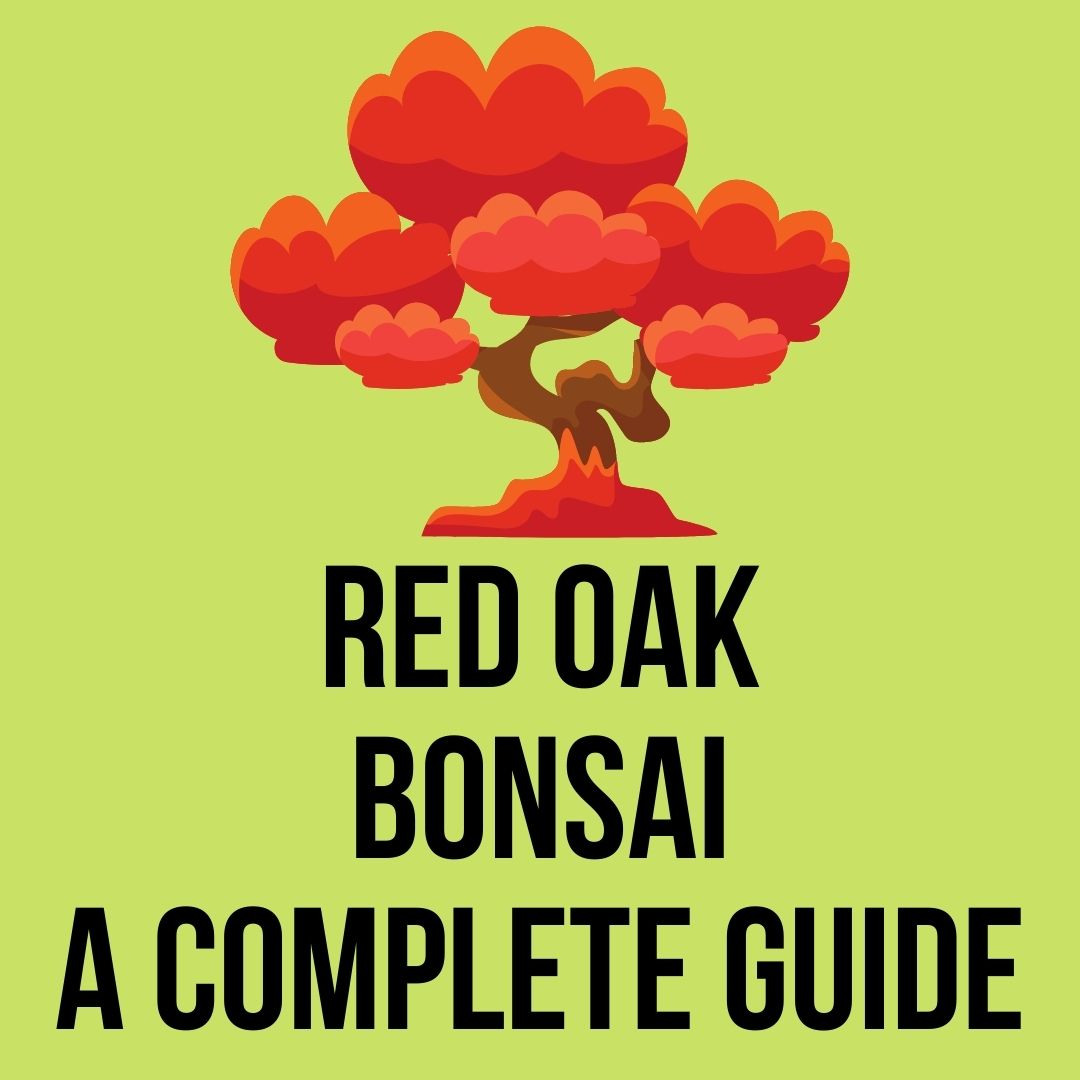The art of bonsai is ancient and has practitioners all around the globe. China is the birthplace of bonsai but Japan refined it and helped it gain recognition. It is the art of growing nature in miniature. The practitioners of bonsai always look for the most beautiful specimens of nature and try to recreate them on a smaller scale and also style it in the best way possible. It is the art that keeps on giving because a bonsai tree can live up to 100 to 150 years.
Let’s see how to grow red Oak Bonsai in simple steps.
Oaks In Bonsai
There are not many trees that have not been turned into bonsai. Many species of oak have beautiful-looking bonsai. Although Japanese bonsai enthusiasts never make bonsai out of oak. It may happen because the oak trees are not considered particularly rare or good-looking by Japanese people. They have three different species of oak and look wise they are the same. So, it is possible they do not consider it as a project to work on.
The most common oak trees that are made into bonsai are Cork oak and Coast Live oak. The oak trees are good trees to be considered as a bonsai project because of their hardy nature and thick trunks. However, there is one characteristic that is not suitable for bonsai. It is their big, wide leaves.
Oak trees are big trees and can be recognized by their leaves from a distance. Even when they are turned into a bonsai, if given enough room the leaves will grow into their size in nature. That may be another reason why the Japanese practitioners of bonsai did not try oak trees.
The Red Oak
There is a species of oak tree that is valued for its leaves. It is the Red oak tree, they are trees that are native to North America. The Red oak is a tree that is planted for its ornamental value. There are around 500 to 600 species of oak trees, among them, the Red Oak is quite famous. The tree leaves of Red Oak turn scarlet in Autumn. It is naturally green in Spring and Summer.
The trees are quite common in Northern America, they are also found in Europe. They have many names. The Northern oak, Spanish oak, Champion oak are a few notable ones. The scientific name for the tree is Quercus rubra. They are usually seen in public parks and in gardens. Many people plant them around their residence too.
How Grow Red Oak Bonsai?
These trees in nature can grow up to 92 ft. Although there have been records of them growing up to 141 ft. in nature. The trees have stout trunks and deciduous leaves. They need full sun and can grow in most types of soil. They are hardy trees in nature and can live up to 400 years in optimal conditions.

Sapling And Soil
The first step to creating a Red oak bonsai is collecting saplings. Red oak trees are not rare in most places, there should be online sites that sell them. Also, your local botanical gardens might have them. The sapling should be planted in a small pot, the soil should be the usual bonsai soil mixture with sand mixed in.
The soil also should be slightly acidic because that is what they prefer in nature. Although Red oak is a strong tree and should be able to grow in any soil. However, it is best to create the soil that imitates its natural environment.
Watering
The sapling should be watered on a daily basis but do not overdo it. The best way to check if your tree needs water is to check with your fingers. Check the dampness of the soil, if it is too dry your plant needs water. Another way to check is by lifting up the pot, if it’s light you will understand it needs water.
Displaying
The trees need full sun and should be placed outside for most of the day. Although as a sapling, keeping them in the shade in the afternoon is a good idea. They can survive most weather when they are fully grown. They are trees that love to be outside and as bonsai that does not change. The trees should be in a place that is 3 to 4 ft high . Make sure they receive full sunlight and even in winter they should be kept outside.
Cutting And Trimming
The trees grow fast and they should be trimmed accordingly. The top growth should be trimmed every month to make sure it does not grow too big. You can use a hand trimmer. Most lower branches should also be trimmed regularly. The Red oak is a strong tree so do not be afraid about trimming branches or the top growth. If you are too laxed with trimming it might grow too big for a pot. So, it is best to keep it under constant observation.
Wiring And Styling
The styling can be done on young trees but the branches are extremely brittle at that age. The best time to do wiring is after 2 years. Regular trimming is the safe bet before that. Although if you are an expert and understand the art you can style a young Red oak bonsai. The styling and training depend on individual preference, so take the route that suits you best.
Repotting
Repotting for a bonsai is an essential part. The Red oak should be repotted every two years. While repotting the tree, trim the roots that are thick and strong. These roots are not needed and will grow out of the pot. The fine thin roots that are the majority are enough for your tree to survive. So, cut the roots that are 1 to 1.5 inches thick but keep the fine, thin roots intact. Also, move your tree to a bigger pot if you want it to have more freedom.
Pests And Fungi
The Red oak trees are hardy trees but they also can be infected by pests or fungi. The Canker pathogen has been attacking Red oaks all over Northern America. They cause leaf browning, bark cracking, and bleeding. The sign of a canker is visible at an early stage so removing the infected branch can make the tree safe.
The other danger is the two kinds of fungi. They are Phytophthora cinnamomi and Phytophthora ramorum, they attack the trunks and cause red black cankers. The use of market fungicides is enough or you can use baking soda as an organic fungicide.
Conclusion
The Red oak is one of the most beautiful trees in nature and as bonsai, if they are well maintained can be brought up in your small backyard. The trees are tough and can survive most climates and soil. So, do not be worried about your Red oak bonsai, just keep it under constant observation. The project might seem ambiguous at first but it is not. They are excellent and majestic trees in nature and as a bonsai that does not change.
